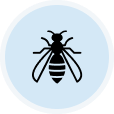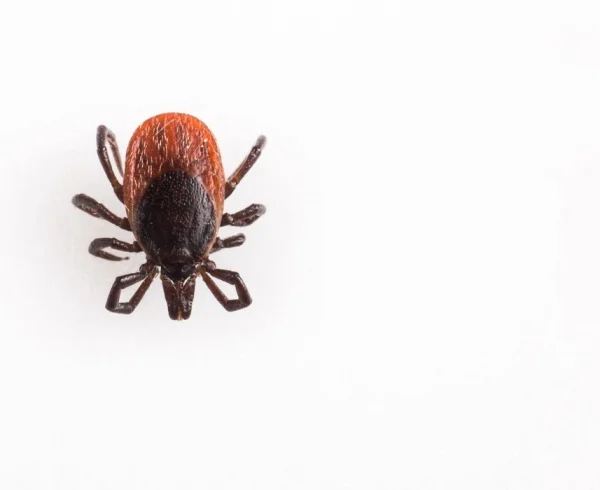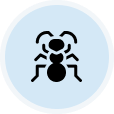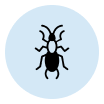If you’ve ever been curious about those crawling creatures called ticks, you’re in the right place. This comprehensive fact sheet will provide all the information you need about ticks – their life cycle, origins, signs of infestation, and, most importantly, effective methods to eliminate them. Get ready to delve into the intriguing and slightly eerie world of ticks.
Key Takeaways
- Stay vigilant and conduct regular checks to prevent tick infestations in your home and yard.
- Take quick action if you notice a tick bite, such as redness, swelling, rash, or flu-like symptoms. Contact your healthcare provider promptly.
- Eliminate ticks by regularly cleaning, maintaining, and using tick control products. Consider professional pest control for severe infestations.
- Protect yourself and your family from tick-borne diseases by keeping your home and yard clean, checking your pets regularly, and using tick-control products.
– – –
Get tick control in Sacramento County or San Diego County
Tick infestations will not go away on their own
Contact Us Now To Get Rid Of Them
– – –
What Are Ticks?
Ticks are tiny, blood-sucking parasites primarily known for their potential to transmit diseases to animals and humans. Belonging to the arachnid family, they are closely related to spiders and mites.
Ticks are distinctive for their eight-legged, flat-bodied appearance and vary in color and size. Although tiny, usually ranging from 1mm to 1cm, they are capable of causing significant health issues.
According to the Centers for Disease Control and Prevention (CDC), there are various tick species out there, including:
- Blacklegged tick (aka Deer tick or Ixodes Scapularis)
- American dog tick (aka Dermacentor variabilis)
- Lone star tick (aka Amblyomma Americanum)
In fact, if you’ve ever had a pet, odds are, you’ve encountered these little creatures at some point. Familiarizing yourself with ticks is the first step in preventing their dangers.
Why Are Ticks So Concerning?
The primary concern surrounding ticks is their potential to transmit diseases. When an infected tick bites you, it’s not just a simple bite. It’s a potential carrier of harmful pathogens and infectious diseases, such as:
- Lyme disease (caused by Borrelia burgdorferi)
- Rocky Mountain spotted fever
- Anaplasmosis
- Babesiosis
- Ehrlichiosis
- Powassan virus
- Tularemia
These tick-borne illnesses can have severe consequences on your health. Additionally, once a tick latches onto you, it can stay attached for several days, steadily feeding on your blood. The longer ticks remain attached, the higher the chance for it to transmit any pathogens it may carry.
What Is the Life Cycle of Ticks?
Ticks have a complex life cycle that spans over two years and includes four stages – egg, larva, nymph, and adult:
- Egg: A tick’s life begins as an egg. An adult female lays thousands of eggs on the ground, which hatch into larvae.
- Larva: The first active stage for a tick. Larvae are tiny, with only six legs. They search for a smaller host, like birds or rodents.
- Nymph: After feeding, larvae drop off their host and molt into nymphs, growing an extra pair of legs. Nymphs are larger than larvae but smaller than adults. They seek and feed on larger hosts, potentially humans. After feeding, they drop off and molt into adults.
- Adult: Adult ticks seek larger hosts like deer or humans. After feeding and mating, male ticks die. Engorged females drop off their hosts to lay eggs, starting the cycle again.
Where Do Ticks Come From?
Ticks are parasites found worldwide, except in freezing climates. They thrive in warm, humid areas, with peak activity in spring and summer.
Ticks live in forests, grasslands, and even urban parks with dense vegetation. They climb tall grass or shrubs, waiting for a potential host to pass by. This behavior, known as “questing,” allows ticks to attach to a passing host.
How Do Ticks Spread?
Contrary to popular belief, ticks cannot jump or fly. Instead, they rely on hosts for movement. Once they find a suitable host, including birds, reptiles, mammals, or humans, ticks hitch a ride and can travel long distances.
This ability to accompany hosts allows ticks to spread to new areas, potentially causing infestations. This is especially true for ticks that attach to birds, as birds can fly and disseminate ticks to new territories.
Ticks can also spread when they detach from hosts after a blood meal. Ticks can survive, reproduce, and establish new populations with tall vegetation and potential hosts in warm and humid conditions.
It’s essential to be vigilant of tick habitats while hiking or enjoying the outdoors and take preventive measures against tick bites.
– – –
Get tick control in Sacramento County or San Diego County
Tick infestations will not go away on their own
Contact Us Now To Get Rid Of Them
– – –
What Are the Signs of a Tick Infestation?
Identifying a tick infestation early can help you take quick action and prevent potential health hazards. Here are some signs that may indicate a tick infestation in your surroundings:
- Seeing ticks on pets, clothes, or crawling on surfaces.
- Unexplained bites, often red and itchy, sometimes with a rash.
- Illness or weakness in pets, with symptoms like loss of appetite, fever, and fatigue.
- Nests in tall grass, shrubs, or decaying leaves.
- Presence of small, dark, clustered particles known as “tick feces” in areas where pets spend time or in their fur (this can cause Lyme disease!).
Remember, ticks prefer warm, humid areas and tall vegetation. Regularly maintaining and cleaning your yard can greatly reduce the risk of tick infestations.
What Do Tick Bites Look Like?
Tick bites are typically hard to identify because they often do not cause immediate symptoms. However, certain signs and symptoms can help you spot a tick bite:
- Redness and swelling: Mosquito-like bump, often with swelling, appearing a day after the bite.
- Rash: Distinctive rash for tick bites, like Lyme disease. It slowly expands over days, forming a ‘bull’s-eye’ pattern—a red ring around a clear area, surrounded by a wider red circle. Not all may develop this rash; some may have a solid red rash.
- Flu-like symptoms: Fever, chills, fatigue, muscle, joint aches, or swollen lymph nodes in the days or weeks after a tick bite? Seek medical attention.
Where to Look for Ticks
Being vigilant about ticks is crucial in preventing infestation. Ticks are often found in specific areas, so knowing where to look helps you spot them early and take necessary action. Here are some common places for tick checks:
- Pets: Regularly check your pets for ticks, focusing on under the collar, inside the ears, between the toes, and around the eyelids.
- Tall Grass and Bushes: Ticks love hanging out in your yard in tall grass, shrubs, and overgrown areas. They can also be found in piles of leaves or around gardens.
- Carpets and Rugs: Ticks can sometimes be brought into the house on clothing or pets, then fall off and hide in your carpets or rugs.
- Furniture and Bedding: If ticks have entered your home, they might be found in furniture, such as sofas or beds. It’s particularly important to check if your pets have access to these areas.
- Cracks and Crevices: Ticks can hide in small, hard-to-see places. Check any wall or flooring gaps, especially in damp areas like basements or bathrooms.
If you find ticks in your home, remove them promptly and clean the area thoroughly to prevent infestation. Keeping your home and yard clean is the best way to prevent tick issues.
– – –
Get tick control in Sacramento County or San Diego County
Tick infestations will not go away on their own
Contact Us Now To Get Rid Of Them
– – –
How to Get Rid of Ticks
Getting rid of ticks can be challenging due to their small size and persistent nature, but it’s not impossible. Here are some effective ways to get rid of ticks in your home and yard:
- Regular Cleaning: Vacuum your home regularly, focusing on carpeted areas, cracks, crevices, and pet-frequented spots. Wash pet bedding and your own regularly in hot water to kill ticks.
- Tick Control Products: Use tick sprays, powders, insect repellent, and collars for pets, following the manufacturer’s instructions.
- Regular Pet Checks: Check pets for ticks regularly. Remove ticks immediately with tweezers, avoiding squeezing or crushing. Clean the bite area with an antiseptic. Consult your vet before applying any tick repellent to your pets.
- Keep Yard Tidy: Reduce tick habitats by maintaining a clean yard. Mow the lawn regularly, trim bushes and trees, and promptly rake and dispose of leaves.
- Professional Help: For severe tick infestations, call a pest control professional with the expertise and equipment for tick removal from your home and yard.
Remember, prevention is always better than cure. By preventing ticks from invading your home and yard, you can help protect yourself, your family, and your pets from the diseases ticks can carry.
 1st pest control service just $49. Must schedule service online.
1st pest control service just $49. Must schedule service online.






 You’re supporting a small, local business
You’re supporting a small, local business


